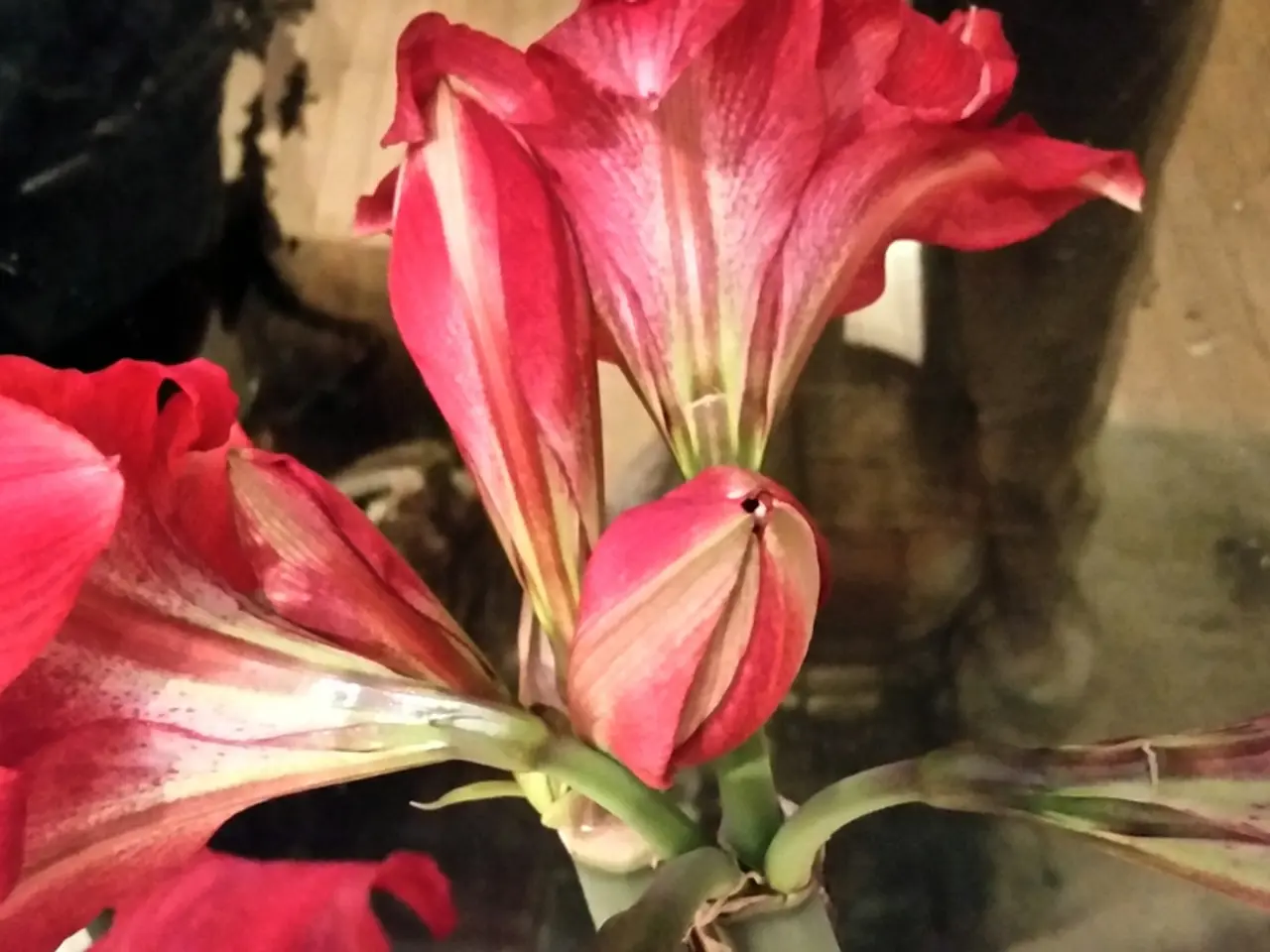Preparing Dahlias Post-Bloom: A 4-Step Guide to Maintain Summer Beauty and Set Up for Future Blossoms
In the vibrant world of gardening, dahlias are a popular choice for their stunning blooms. Here's a guide on how to care for dahlias after they've finished flowering, ensuring they thrive next season.
After the first frost has killed the above-ground growth, it's time to cut back dahlias. Cut the hollow dormant stems completely to ground level. This usually happens in the late fall once the foliage dies back.
Carefully dig up the dahlia tubers after the foliage has been killed by frost. Tubers are fleshy underground storage organs that need to be cleaned and separated. Store them in a warm, dry place during winter to prevent rot. It is critical to keep them dry and at moderate temperatures, avoiding wet and freezing conditions that will cause tuber rot.
In the spring, when the threat of frost has passed and soil temperatures have warmed, replant the stored tubers. In temperate areas, this is often around April or May. Tubers should be replanted in well-draining soil with good spacing to allow airflow and with a balanced fertilizer schedule, switching to a bloom fertilizer as flowers develop.
Regular deadheading of spent flowers during the growing season encourages continuous blooming and promotes fuller plants. Pinch or disbud growing tips when the plants are about 12-16 inches tall. Water deeply but less often, aiming for 1-2 inches per week at soil level to avoid fungal diseases. Mulch around the base to retain moisture and protect roots.
Stop fertilizing about six weeks before the first expected frost to help tubers mature for storage. Ensure adequate airflow and avoid wet soil conditions during storage to prevent tuber rot.
When lifting dahlias, take care to prevent accidental damage to tubers. All dead or decaying plant matter should be removed after cutting back to prevent the spread of disease.
Dahlias can be planted in the garden as soon as the soil has warmed and the risk of frost has passed. For those living outside the recommended hardiness zone (USDA 8-11), it's best to lift and store dahlias indoors for winter.
The ThermoPro TP50 Hygrometer can be used to monitor temperature and humidity during storage. Pre-sprouted tubers can be potted into individual containers for consistent moisture until growth occurs. Tubers should be kept in a cool, dark place until planting in spring.
Dahlias may be allowed to stand for several weeks after the first frost before cutting back. Tubers may be left in the ground where the plant is hardy, or lifted and stored indoors for protection.
Routine deadheading (removal of faded blooms) can extend the display of dahlias. Snip just above a leaf node using shears when deadheading. Dahlias can bloom through summer and into the fall, but the first frost marks the end of the flowering season.
For those seeking additional gardening tips, videos, info, and a free e-book on growing tomatoes, signing up for a platform newsletter is a great option. A great-value Secateurs Set from Spear & Jackson is available for sharp cuts when lifting and storing dahlias. Back to the Roots Organic Vermiculite is available at Amazon for tuber protection.
Lastly, remember that dahlia clumps can be divided or stored whole through winter. Stored dahlia clumps should be moved to a warm location to encourage sprouting.
Dahlias can be optimally stored in a warm, dry place during winter to prevent rot and tuber rot, as recommended after the foliage has been killed by frost. In the spring, when soil temperatures have warmed and the threat of frost has passed, dahlias can be replanted in home-and-garden plots with well-draining soil, a balanced fertilizer schedule, and good spacing for airflow.



